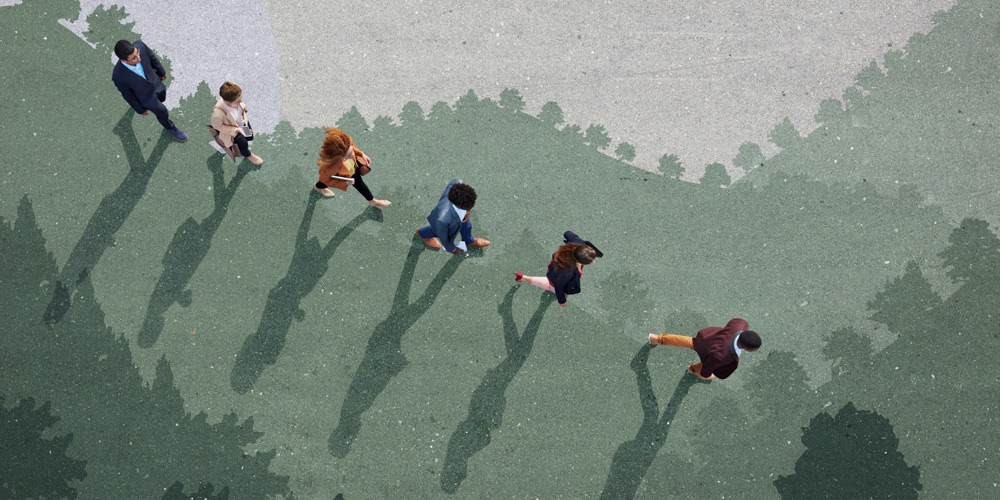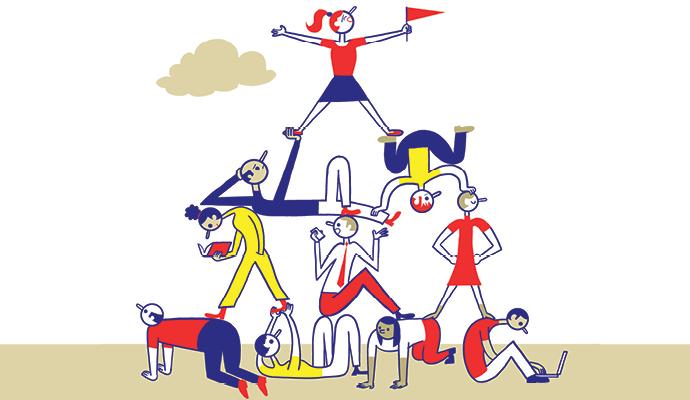Leading your team of hunter-gatherers
The way in which ancient societies organized themselves offers clues to how to manage today’s changing workforce.
There was much consternation among business leaders about the changing demands placed on them before the global coronavirus pandemic. Some of the concern was generationally driven. Some was rooted in the gig economy and the growing demand for alternative work arrangements. And some of it was about the need and expectation for constant upskilling. Then came COVID-19, like an earthquake on top of already significant tectonic shifts, turning even staid nine-to-five office dwellers into a hyper-nimble, dispersed workforce of the future.
Leaders who expect things to get back to “normal” are ignoring the lessons of evolutionary history. Our current circumstances demand that businesses, and their leadership, adapt or die — but how? The answer to this question also lies in humanity’s deep past.
Generational differences within the workforce get a lot of attention. Yet the most significant changes leaders must deal with actually arise from the transition to project-oriented work and companies’ decreasing loyalty to their people, which has, in turn, triggered a downward trend in the allegiance of workers to organizations. Together, these changes have contributed to a reliance on short-term specialists and the flattening of organizations. However, expectations among managers for the stability (and rewards) of hierarchical structures continue on, even though such structures are now less and less relevant to achieving goals.
The future of workforce management is filled with uncertainty, but by looking to the past, at the ways in which ancient societies were organized, leaders can learn to adapt.
Learning from the past
I spoke recently with Brian Spisak of the University of Otago, in Dunedin, New Zealand, about the roots of our expectations of leaders. Spisak, an evolutionary psychologist, explained that deep in human history, fixed hierarchies arose together with agricultural settlements. The storage and distribution of the harvest in these settlements created power dynamics — organizations are always about power — that rewarded those who controlled both the accumulation and the allocation of critical resources. Seminomadic hunter-gatherer societies, by contrast, were less settled and less rigid, and so had more fluid leadership structures, in which the person most fit for the task at hand, be it a hunt or a conflict with another tribe, stepped into the role of leader.
Like the work done by hunter-gatherer societies of the past, the flat structures and team-based work of today call for cooperative behaviors. Yet many organizations still prioritize competitive prowess. They create competitive environments, via a process Spisak calls niche construction, that elicit aggressive behavior among those who might otherwise cooperate with one another. In addition, the growth of gig work, the increased frequency of job changes, the reemergence of the “side hustle,” and other mounting deviations from the lifetime employment model have, in essence, created a seminomadic workforce. These workers, who are being constantly judged on their results, will choose to follow leaders who create the conditions in which they are most likely to succeed — fit-for-purpose leaders rather than those who occupy static, formally designated leadership positions.
Like the work done by hunter-gatherer societies of the past, the flat structures and team-based work of today call for cooperative behaviors. Yet many organizations still prioritize competitive prowess.
Spisak told me, “Agile and transient teams are the emerging norm. Organizations have learned to hire cooperative and empathetic individuals who can work well in teams, yet their so-called leaders still construct highly competitive environments (for example, by encouraging teams to compete over scarce resources). So, they’re hiring seminomadic specialists, yet placing them in niches with detrimental artifacts of our business-settlement past.” These artifacts reside in formal recognition and reward structures and informal mores prizing winner-take-all behaviors over mission-focused cooperation.
An alternative can be found in “leaderful” organizations, in which everyone is encouraged to lead from where they are, in pursuit of the larger mission or goal. This does not imply that everyone — or no one — is in charge. In leaderful organizations, people can pass the baton of leading to one another without losing status in the group, because the group recognizes that different individuals are best equipped to lead in different situations. This isn’t a new concept; it was advanced as “multiple leadership” by Mary Parker Follett in the early 20th century. However, our collective addiction to heroic individuals, and perhaps a bit of sexism, kept the idea from achieving its full potential.
Three adjustments leaders can make
Spisak predicts that the realities of the marketplace will cause collaboration and shared leadership to “trickle up” legacy hierarchies. I am not as confident that leaders will be open to such radically different ways of distributing power within their organizations. If my doubts are right, perhaps leaders should consider looking to nature for insight. There, hierarchies develop to serve those below, not those above. There are no more layers or structure than necessary to facilitate productive functioning and foster adaptive capacity.
One important step that leaders can take is to explicitly acknowledge the circumstances in which either competition or cooperation is most likely to achieve the desired outcome. (From the work of such thinkers as sociobiologist E.O. Wilson and historian Rutger Bregman, there is ample evidence that the ability to cooperate is a significant human asset and advantage.) Then, as a leader, you can examine your organization’s structures, processes, and protocols to see if they align with the intended competitive or cooperative behaviors. Where there is dissonance, correct it.
A second shift is to embrace self-organization — another valuable lesson from nature. Rather than imposing structures and processes from above, let the people doing the work create them. Be clear on the mission, values, legal or regulatory red lines, and measures of success. Demand accountability. And then trust your people to get things done.
Lastly, executives must demonstrate that they are willing to lead and, in turn, to be led. Celebrate having a team that possesses robust capacity and capability to lead. Model the behavior you want to see in others. This lowers each person’s perceived personal risk when stepping back from a leadership role.
One eventual positive of the COVID-19 pandemic might be that we come to understand just how much we need one another and must rely on one another to drive important work in difficult moments. Now, leaders need to create the conditions that support this way of working and ensure that as many people as possible can contribute to the fullest extent of their ability.




